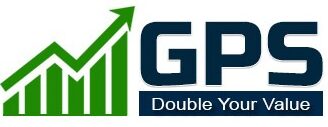Picture a magic slot machine. Each time you pull the arm, you make back a multiple of whatever you wagered. How much time would you devote to cranking that arm?
When it comes to the value of your business, you can make many bets, but only one has a virtually guaranteed return. Most companies are valued on a multiple of earnings before interest, taxes, depreciation, and amortization (EBITDA), so every dollar of incremental profit you earn in the short term will translate into a multiple of that down the road.
Since most acquirers look at three years’ worth of financial reporting, squeezing out every extra dollar of profit makes even more sense if you’re considering an ownership transition in the next thirty-six months.
How One Founder Increased the Value of His Business
For an example of a founder obsessed with finding every dollar of profit available, consider someone who created a successful business offering after-market sales applications for website owners.
The business was thriving, but when the partner responsible for finance left the company, the founder was forced to look closely at the profit and loss (P&L) statement. The founder identified potential improvements and made notes in the margin next to each line item to track changes.
To save time, the founder started using a single letter beside each entry to represent the action they wanted to take:
- P stood for “Plus,” something profitable, and they wanted more.
- U stood for “Unnecessary,” an expense that could be eliminated.
- R stood for “Replaceable,” a cost that could be replaced with a better or cheaper option.
- E stood for “Equal” and was used for items that should remain unchanged.
The founder realized that these shorthand notes could be organized into a memorable acronym called “PURE.”
The PURE method became a game. Every month, the founder scrutinized the P&L with the same four-letter system. They engaged the team to act on each item that needed improvement, becoming obsessed with squeezing out more profit every month.
The approach worked. Within a couple of years, after applying the PURE methodology to improve profitability, the business saw a significant increase in its value—multiplying the initial valuation by ten.
The Downside of Using Your Company’s Bank Account as a Slush Fund
There’s a downside to treating your company like a piggy bank. Co-mingling personal and business expenses while letting other costs go unchecked may help you reduce taxes in the short term, but it could end up costing you more in lost value when you decide to sell your business. Instead, keep your P&L “PURE” to maximize the value of your business.


Leave a Reply